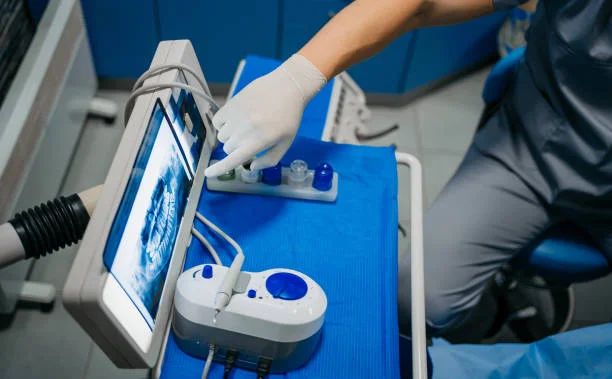Ultrasonic scaling technology has revolutionized periodontal therapy, with modern dental scaler units operating at frequencies between 25,000-45,000 Hz for optimal calculus removal. Studies show ultrasonic scalers remove biofilm 6x more effectively than hand instruments while reducing treatment time by 40%. The global ultrasonic dental scaler market is projected to reach $1.2 billion by 2028, driven by increasing awareness of periodontal disease affecting 47.2% of adults over 30. Power output, frequency options, and tip compatibility are crucial factors determining clinical effectiveness and patient comfort during scaling procedures.
Discover more stories connected to this topic.
Magnetostrictive vs Piezoelectric Technology
The technology inside your scaler unit makes a huge difference in how it performs. Most dentists don’t realize these two systems work completely differently, even though they both create ultrasonic vibrations.
Magnetostrictive scalers use metal stacks that change shape when electricity passes through them. They vibrate in an elliptical pattern, which means the tip moves in tiny circles instead of just back and forth. This circular motion helps break up calculus more efficiently, especially on curved root surfaces.
The power output on magnetostrictive units typically ranges from 20-50 watts, and you can really feel that extra oomph when working on heavy deposits. Cavitron has dominated this space for decades, and their newer units can automatically adjust power based on the resistance they encounter.
Piezoelectric scalers work differently – they use ceramic discs that expand and contract with electrical current. The movement is more linear, creating a chisel-like action that’s incredibly precise. These units usually run at lower power (15-30 watts) but the focused energy transfer makes them surprisingly effective.
European manufacturers like EMS and Acteon have perfected piezoelectric technology. Their tips vibrate in straight lines, which some clinicians find better for delicate subgingival work around implants.
Power Settings and Frequency Options
Getting the power settings right can make or break your scaling efficiency. Too little power and you’re wasting time barely tickling calculus deposits. Too much and you’ll damage tooth structure or cause unnecessary patient discomfort.
Most modern units offer 10-15 power levels, but you’ll probably use just 3-4 of them regularly. Start new patients at medium-low power (around 30-40% max) to gauge their sensitivity. Heavy calculus usually needs 60-70% power to remove efficiently.
Frequency tuning is where things get technical. Some units auto-tune to maintain optimal tip resonance, while others require manual adjustment. Auto-tuning sounds convenient, but experienced hygienists often prefer manual control for specific clinical situations.
Variable frequency units let you switch between different operating ranges during the same appointment. Lower frequencies (25-30 kHz) generate more power for tough deposits, while higher frequencies (40-45 kHz) create finer vibrations for finishing work.
Water Flow and Cooling Systems
The water irrigation system isn’t just for keeping things cool – it’s actually crucial for effective biofilm disruption. The combination of ultrasonic energy and pressurized water creates acoustic microstreaming that physically destroys bacterial cell walls.
External water flow systems are cheaper and easier to maintain, but they don’t provide the same cavitation effects as internal irrigation. When water flows through the tip itself, it gets energized by the ultrasonic vibrations, creating tiny bubbles that implode near bacterial colonies.
Flow rates typically range from 15-50 ml/minute, and most units let you adjust this independently from power settings. Higher flow rates provide better cooling and debris removal, but they can also reduce visibility in the treatment area.
Some newer units include heated water reservoirs. This might seem like a luxury feature, but research shows that warm irrigation (around 98-100°F) significantly reduces patient sensitivity while maintaining antimicrobial effectiveness.
Tip Selection and Compatibility
Your scaler is only as good as the tips you put on it, and this is where many practices make expensive mistakes. Not all tips work with all units, and using incompatible tips can damage both the tip and the handpiece.
Universal tips exist, but they’re usually not as efficient as manufacturer-specific designs. The threading, internal dimensions, and resonance characteristics need to match perfectly for optimal energy transfer.
Standard tips work for most supragingival scaling, but you’ll want specialized designs for specific situations. Slim tips (like Cavitron’s Slimline series) reach deeper pockets without traumatizing tissues. Right and left curved tips help access posterior areas that straight tips can’t reach effectively.
Tip wear is a real issue that affects performance more than people realize. Even slightly worn tips can reduce scaling efficiency by 30-40%. Most manufacturers recommend replacing tips after 40-60 hours of use, but busy practices might need to replace them more frequently.
Explore our handpicked featured posts designed to captivate you on Management Works Media.






